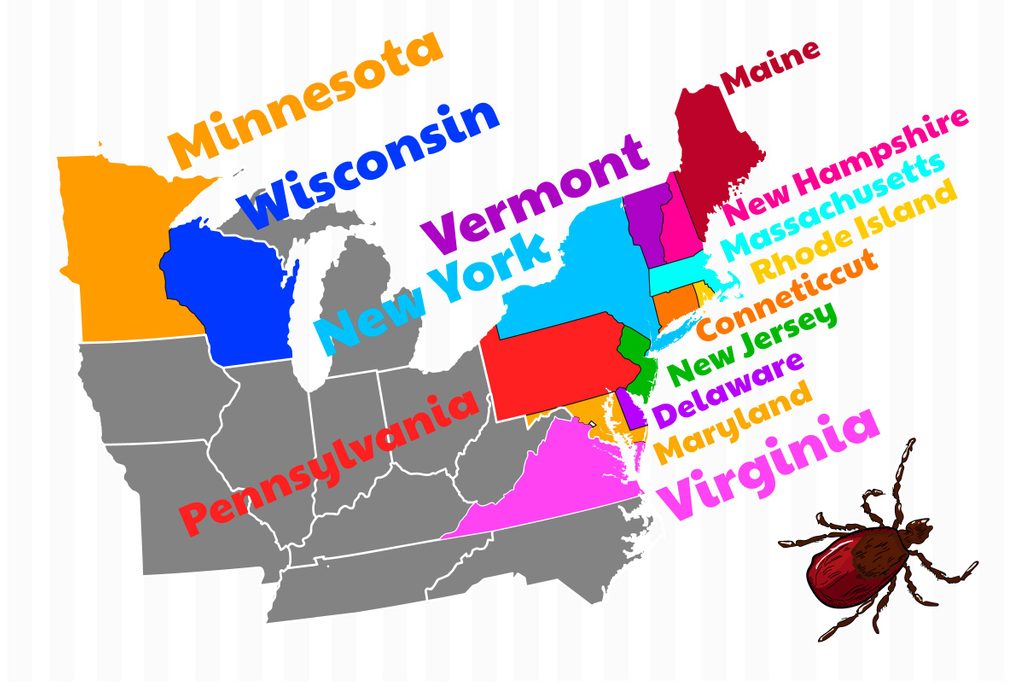These Are the Most Dangerous Places in America for Lyme Disease
Updated: Jul. 17, 2017
Almost all cases of Lyme disease happen in 14 states. Is yours on the list?
Though summertime means longer days, beach trips and those early-dismissal Fridays, the hottest season of the year also poses a slew of different threats. From making sure your family is savvy about water safety to stocking up on bulk sunscreen to protect your skin, it’s important to be mindful of keeping your loved ones while adventuring. Remember that when temperatures rise, so do the arrival of more and more ticks. Tick-borne illnesses are on the rise, including Lyme disease, and depending on where you live or where you plan to vacation, you may be more at risk.

Where You Need to Be More Careful About Lyme Disease
In the 1970s, families in Lyme, Connecticut reported suffering from swollen knees, skin rashes, headaches, and chronic fatigue. They were left untreated until the early 1980s, when a scientist who was studying Rocky Mountain Fever (another tick-borne illness) caught on and eventually, determined their symptoms were due to Lyme disease.
Today, the U.S. Centers for Disease Control and Prevention reports that more than 95 percent of all Lyme disease cases reported in the United States came from the following states:
- Connecticut
- Delaware
- Maine
- Maryland
- Massachusetts
- Minnesota
- New Hampshire
- New Jersey
- New York
- Pennsylvania
- Rhode Island
- Vermont
- Virginia
- Wisconsin
How to Prevent Ticks Bites
If you’re in wooded areas or high-grassy fields, ticks can latch onto your clothing and bury into your hair. Also, if you’re a pet owner, without Frontline or other tick and flea repellent, man’s best friend can transfer ticks to you, too. If you’ll be in nature in any of the states listed above, make sure to stock up on tick repellent to prevent tick bites. The CDC recommends using a brand that has 20 percent or more DEET, picaridin or IR3535, so check your labels before purchasing. The CDC also adds that products that contain permethrin on clothing is a good idea, too: “Treat clothing and gear, such as boots, pants, socks and tents with products containing 0.5% permethrin. It remains protective through several washings. Pre-treated clothing is available and may be protective longer,” they say.
When you’re back inside, check your body and your kids’ for ticks. You should check your pet’s too, including in between your pup’s toes, where ticks have been known to live.
